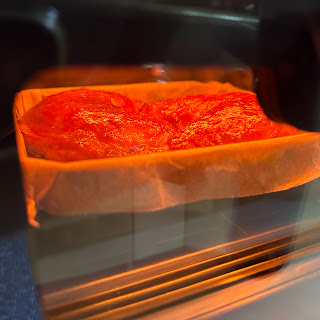A flavourful sweet and spicy chicken legs air fried to aromatic yet keeping the interior tender and juicy. Leaving the finely grated ginger, onion, garlic, and sesame oil infused marinade on the skin while roasting, helped to bring out the flavour. They also gave a nicely caramelised and glossy crust over the skin 😋
Video of the Korean Sweet & Spicy Chicken Leg:
[Ingredients]
2 pcs chicken legs, about 500 ~ 600g
[Marinade A]
1g low-sodium salt
1/8 tsp pepper powder
[Marinade B]
15g dark brown sugar
10g light soy sauce, low-salt
18g Korean red pepper paste
10g rice wine/hua diao jiu
1/4 tsp pepper powder
3g ginger, grated
10g garlic, grated
25g onion, grated
7g chicken stock concentrate
4g sesame oil
[Glazing]
Honey and remaining marinade
[Toppings]
Roasted sesame seeds
Cut green scallions
[Method]
1. Rinse chicken legs and pat dry.
2. Rub Marinade A to the chicken legs.
3. Combine Marinade B in a big mixing bowls.
Let the chicken legs marinate for about 2 hours, or overnight in the fridge.
5. Line a roasting pan with parchment paper.
6. Place the marinated chicken legs with the skin-side down.
7. Air fry in a preheated air fryer at 180C for about 8 minutes.
Brush with honey and air fry at 180C for 1 minute.
8. Turn the chicken legs with the skin-side facing up.
Continue to air fry for about 8 minutes at 180C.
9. Lightly brush honey over the skin. Reduce the temperature to 165C and give a brief 2 to 3 minutes air frying till the honey bubble.
10. Let the chicken legs rest in the air fryer for about 10 minutes.
11. Serve warm chicken legs with a sprinkle of roasted sesame seeds and cut green scallions 😋


















































